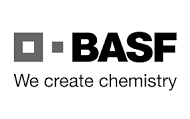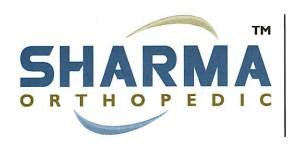28th July,2023
The Chief Manager, Business Intelligence & Analysis
Kenya Revenue Authority
Times Towers
Nairobi, Kenya
Dear Madam,
REF: Application for Advance Ruling for Orthopaedic Implants
We are writing to request for a HS classification, advance ruling, for five types of orthopaedic implants namely:
- Plates 2) Screws 3) Intramedullary Nails/Rods 4) Washers 5)Kirshner Wires
The application is done ,as per section 248(A) of EACCMA. Our proposed HS Classification is 9021.10.00.
The structure of the application consists of:
- Description of the functions of the products
- Extracts from the applicable legal notes, followed by our analysis, highlighted in red.
Similar products were canvassed in October 2022, and this resulted in the update of the description of subheading 9021.90 in the Simba/ICMS system as well as classification of similar products under subheading 9021.10.00.
Description of Products
Orthopaedic Plates
An orthopaedic plate is a form of internal fixation used in orthopaedic surgery to hold fractures in place to allow bone healing. Most modern plates include bone screws to help the orthopaedic plate stay in place.
Orthopaedic plates are designed based on the bone fracture. While the general design is similar, each plate must be manufactured to not only to reduce the fracture but also fit the contour of the patient’s bone.
Orthopaedic Plates Classification Based on Function:
There are different types of orthopaedic plates, even in terms of function. In other words, for any problem or any bone fracture, surgeons use particular varieties of bone plates. These include:
Reconstruction plates
This plate has deep notches on both sides of the plate and in the middle between two holes. The surgeon can bend the plate in various directions to match it with the anatomical structure of the bone. Few surgeons choose to use these plates because they are less durable than other plates.
Tubular plates
These plates are approximately 1 mm thick and are mostly used to fix fractures in areas with low soft tissue. And they usually have less stabilizing power compared to other plates.
Protection Plate
Locking plates can be used either to support a locking head screw, or to force bone together at the fracture. Locking head screws can be applied at the fracture, with the orthopaedic plate in place to reduce applied force on the bone fracture.
Tension and Compression Plate
Compression plates can be implanted in such a way that it is in tension, forcing the bone together at the fracture. The use of an articulated tension device can also be used to compress the bone together by pulling the compression plate.
Bridging Plate
For fragmentary bone fractures, bridging plates can be used to hold the bone in place when there are no anchor points at the fracture point. Bridging can allow for relative stability along the bone, while not disturbing the bone fragments.
Buttress Plate
Buttress plates, or concave plates, are useful for fractures along concave surfaces. Due to the angle of the bone, the contour of the concave plate aligns with the bone, providing even compressive force along the fracture.
The main application of orthopaedic plates and screws is fixation. But what is fixation? Bone fracture fixation is a technique that uses plates to stabilize the fractured bone, allowing it to heal faster and return to early mobility and full function more quickly. In this method, both sides of the bone are fixed with screws to stabilize the fracture and heal it in proper form.
While bone plates are often used to repair fractures, implants or prostheses are artificial joints that are most widely used in the knee and hip.
Orthopaedic Screws
What is the purpose of locking screws in fracture fixation?
They provide improved fixation in osteoporotic bone and superior bridging of severely comminuted { Comminute fractures are a type of broken bone. The term comminute fracture refers to a bone that is broken in at least two places. These fractures can affect any large or long bone in your body. Some of the most common include Femur (thigh)}, fractures. Additionally, locking screws may be used as a fixed angle device for short metaphyseal fragments and juxta-articular shaft fractures, in which anatomic constraints limit the uses of compression plating.
Orthopaedic surgeries are impossible without the use of orthopaedic screws. Orthopaedic screws are one of the tenets in the process of orthopaedic fixation. The bone heals better and faster if the fractures are pressed together firmly by orthopaedic screws. The advantage of these screws is that they decrease the gap between the bones, and, consequently, decrease the stress, which is on the orthopaedic plate as well.
Orthopaedic screws are also known as to be one of the omnipresent hardware devices used in the surgeries, that may either be used by themselves to provide fixation, or in synchrony with other devices. Any screw which is used in the interfragmentary compression achievement is termed as a lag screw. The advantage of these screws is that they protect the fractured bone from bending, getting rotated, and trivial loading forces.
Orthopaedic Intramedullary Rod/ Intramedullary Nail
An intramedullary rod, also known as an intramedullary nail (IM nail) or inter-locking nail or Küntscher nail (without proximal or distal fixation), is a metal rod forced into the medullary cavity of a bone. IM nails have long been used to treat fractures of long bones of the body.
Intramedullary fixation is valuable and appropriate for the majority of tibial fractures. It is well-suited for the mid diaphysis. With newer nail designs and attention to technique, nailing can be extended to both proximal and distal extraarticular fractures.
Intramedullary nailing is surgery to repair a broken bone and keep it stable. The most common bones fixed by this procedure are the thigh, shin, hip, and upper arm. A permanent nail or rod is placed into the centre of the bone. It will help you be able to put weight on the bone.
Multi-purpose Orthopaedic Washer
Originally designed for use with trans-ilial rods and nuts, multi-purpose orthopedic washers can also be used with standard bone screws. When using trans-ilial rods to augment repair of sacro-iliac luxations or pelvic fractures, these washers are designed for placement between the bone and trans-ilial nut to increase surface area, preventing compression into soft bone.
Washers can be used with lag screws during fracture fixation to optimize compression and minimize the risk of unintentional intrusion of the screw head through cortical bone during screw insertion. The concept of using washers to optimize screw fixation is particularly applicable to iliosacral screw fixation and screw fixation of the femoral neck, distal femur, as well as the proximal and distal tibia.
Washers are used to spread load or retain wire or sutures. Use with cortical or self-tapping screws.
Washers are used to spread load or retain wire or sutures. Spiked washers in particular are used for ligament reattachment or fixation specifically for re-adaption of torn or avulsed ligaments. For use with cortical or self-tapping screws.
Kirschner Wires
K wires (Kirschner wires) are a type of stabilization wire/pin used in orthopedic surgery. They are pointed stainless steel wires that can be used in multiple roles during internal fixation:
Kirschner wires or K wires are metallic wire (stainless steel) sharpened one or both side, are used to hold bone fragments together (pin fixation) or to provide an anchor for skeletal traction.
K wire (Kirschner wire) is now widely used in orthopedics and other types of medical and veterinary surgery. These wires can be drilled through the bone to hold the fragments in place. They can be placed percutaneously (through the skin) or can be buried beneath the skin.
K-wires are often used to stabilize a broken bone and can be removed in the office once the fracture has healed. Some K-wires are threaded, which helps prevent movement or backing out of the wire, although that can also make them more difficult to remove.
K Wire (Kirschner Wire) is indicated for use in the fixation of bone fractures, bone reconstruction, and as guide pins for insertion of other implant. The size of the Pin chosen should be adapted to the specific indication. Surgeon judgement is required to ensure a K Wire (Kirschner Wire) is appropriate for the indication.
K Wires (Kirschner Wires) are indicated for use in the following conditions:
K Wires (Kirschner Wires) are used for temporary fixation during some operations. After definitive fixation they are then removed. The pins are usually removed four to five weeks post operation.
They can be used for definitive fixation if the fracture fragments are small. In some settings they can be used for intramedullary fixation of bones such as the ulna.
Tension band wiring is a technique in which the bone fragments are transfixed by K-wires which are then also used as an anchor for a loop of flexible wire. As the loop is tightened the bone fragments are compressed together. Fractures of the kneecap and the olecranon process of the elbow are commonly treated by this method.
K Wire (Kirschner Wire) is passed through the skin then transversely through the bone and out the other side of the limb. The wire is then attached to some form of traction so that the pull is applied directly to bone. In traction of the femur for example, the protruding ends of the wire are fixed to the legs of a horsehoe shaped frame which maintains tension in the wire while the crook of the horseshoe is attached via line and pulleys to weights which maintain the traction.
K Wire (Kirschner Wire) can be used to guide cannulated screws to a precise location.
Summary of the functions of the 5 Products
They are used for internal fixation in orthopaedic surgery to hold fractures in place to allow bone healing. They are not permanent and will be removed when the particular body part heals.
Difference between other artificial body parts and the instant products
Orthopaedic implants are those materials that are used for hard tissue applications to replace bones and joints. Orthopaedic implants are categorized into two groups including permanent joint replacements and temporary fracture fixation devices. Permanent orthopaedic implants include the hip, knee, ankle, shoulder, elbow, wrist, and finger joints, which are expected to serve in the human body throughout the life span of the patients. The permanent body parts are classifiable under subheading 9021.3. Fracture fixation devices are to be classified under subheading 9021.10.00
The Plates, Screws, Nails/Rods, Washers, K-Wires are for temporary support of the above-mentioned organs to FastTrack healing of the organ. They do not replace the organ.
Analysis of Relevant Explanatory Notes
Chapter 90 Explanatory Notes
1.‑ This Chapter does not cover :
(f) Parts of general use, as defined in Note 2 to Section XV, of base metal (Section XV) or similar goods of plastics (Chapter 39);however, articles specially designed for use exclusively in implants in medical, surgical, dental or veterinary sciences are to be classified in heading 90.21;
2.‑ Subject to Note 1 above, parts and accessories for machines, apparatus, instruments or articles of this Chapter are to be classified according to the following rules :
(b) Other parts and accessories, if suitable for use solely or principally with a particular kind of machine, instrument or apparatus, or with a number of machines, instruments or apparatus of the same heading (including a machine, instrument or apparatus of heading 90.10, 90.13 or 90.31) are to be classified with the machines, instruments or apparatus of that kind;
(III) PARTS AND ACCESSORIES
Subject to Chapter Note 1, parts or accessories identifiable as suitable for use solely or principally with the machines, appliances, instruments or apparatus of this Chapter are classified with those machines, appliances, etc.
The extracts of the notes above instruct us to classify parts of general use under heading 90.21 if they are exclusively used in medical, surgical, dental, or veterinary sciences. Therefore, that note allows the classification of the instant products under heading 90.21.
Parts and accessories of products of chapter 90 are to be classified with the corresponding machines, apparatus, instruments, or articles.
Analysis of Relevant Explanatory Notes
Chapter 90 Explanatory Notes
Chapter 90 Note 6.‑ For the purposes of heading 90.21, the expression “orthopaedic appliances” means appliances for :
– Preventing or correcting bodily deformities; or
– Supporting or holding parts of the body following an illness, operation, or injury.
Orthopaedic appliances include footwear and special insoles designed to correct orthopaedic conditions, provided that they are either (1) made to measure or (2) mass-produced, presented singly and not in pairs, and designed to fit either foot equally.
Chapter 90 Note 6, defines the precise meaning of Orthopaedic Appliances as per the Terms of Heading 90.21 and Terms of Subheading 9021.10.00. This note is very important in the consideration of the type of the goods classifiable under subheading 9021.10.00. The definition describes the functions of the plates, screws, nails/rods, K-wires, washers. This note supports the descriptions of the Plates, Screws, Nails/Rods done above, that is prevention, correction, support, holding but not replacement which would change the proposed classification.
Analysis of Relevant Explanatory Notes
Heading 9021 Explanatory Notes
90.21 ‑ Orthopaedic appliances, including crutches, surgical belts and trusses; splints and other fracture appliances; artificial parts of the body; hearing aids and other appliances which are worn or carried, or implanted in the body, to compensate for a defect or disability.
9021.10 – Orthopaedic or fracture appliances
- Artificial teeth and dental fittings :
9021.21 – – Artificial teeth
9021.29 – – Other
- Other artificial parts of the body :
9021.31 – – Artificial joints
9021.39 – – Other
9021.40 ‑ Hearing aids, excluding parts and accessories
9021.50 ‑ Pacemakers for stimulating heart muscles, excluding parts and accessories
9021.90 ‑ Other
(I) ORTHOPAEDIC APPLIANCES
Orthopaedic appliances are defined in Note 6 to this Chapter. These are appliances for :
– Preventing or correcting bodily deformities; or
– Supporting or holding parts of the body following an illness, operation or injury.
They include :
(1) Appliances for hip diseases (coxalgia, etc.).
(2) Humerus splints (to enable use of an arm after resection), (extension splints).
(3) Appliances for the jaw.
(4) Traction, etc., appliances for the fingers.
(5) Appliances for treating Pott’s disease (straightening head and spine).
(6) Orthopaedic footwear and special insoles designed to correct orthopaedic conditions, provided that they are either (1) made to measure or (2) mass-produced, presented singly and not in pairs and designed to fit either foot equally.
(7) Dental appliances for correcting deformities of the teeth (braces, rings, etc.).
(8) Orthopaedic foot appliances (talipes appliances, leg braces, with or without spring support for the foot, surgical boots, etc.).
(9) Trusses (inguinal, crural, umbilical, etc., trusses) and rupture appliances.
(10) Appliances for correcting scoliosis and curvature of the spine as well as all medical or surgical corsets and belts (including certain supporting belts) characterised by :
(a) Special pads, springs, etc., adjustable to fit the patient.
(b) The materials of which they are made (leather, metal, plastics, etc.); or
(c) The presence of reinforced parts, rigid pieces of fabric or bands of various widths.
The special design of these articles for a particular orthopaedic purpose distinguishes them from ordinary corsets and belts, whether or not the latter also serve to support or hold.
(11) Orthopaedic suspenders (other than simple suspenders of knitted, netted or crocheted materials, etc.).
This group also includes crutches and crutch‑sticks. (It should, however, be noted that ordinary walking‑sticks, even if specially made for disabled persons, are excluded (heading 66.02).)
This group further includes walking aids known as “walker-rollators”, which provide support for the users as they push them. They generally consist of a tubular metal frame on three or four wheels (some or all of which may swivel), handles and hand-brakes. “Walker-rollators” can be adjustable in height and can be equipped with a seat between the handles and with a wire basket for carrying personal items. The seat allows the user to take short rest breaks whenever necessary.
The heading does not include :
(a) Stockings for varicose veins (heading 61.15).
(b) Simple protectors or devices designed to reduce pressure on certain parts of the foot, (heading 39.26, if made of plastics, or heading 40.14, if of cellular rubber fixed on gauze with adhesive plaster).
(c) Supporting belts or other support articles of the kind referred to in Note 1 (b) to this Chapter, e.g., pre‑natal or maternity belts (generally heading 62.12 or 63.07).
(d) Mass‑produced footwear the inner soles of which have been simply arched to alleviate flat‑footedness (Chapter 64).
This group also covers orthopaedic appliances for animals, for example, hernia trusses or straps; leg or foot fixation apparatus; special straps and tubes to prevent animals from crib‑biting, etc.; prolapsus bands (to retain an organ, rectum, uterus, etc.); horn supports, etc. But it excludes protective devices having the character of articles of ordinary saddlery and harness for animals (e.g., shin pads for horses) (heading 42.01).
(II) SPLINTS AND OTHER FRACTURE APPLIANCES
Fracture appliances are used either to immobilise injured parts of the body (for extension or protection), or for setting fractures. They are also used in the treatment of dislocations and other joint injuries.
Some of these articles are designed for fitting onto the patient (e.g., wire, zinc or wooden cradles for holding limbs, plaster bandage splints, fracture appliances for ribs, etc.); others are designed to be fixed to a bed, a table or another support (protective bed cradles, extension fracture apparatus made of tubing, to be used in the place of splints or cradles, etc.). However, when the latter appliances form an inseparable part of the bed, table or another support, they are excluded from this heading.
Subject to the provisions of Note 1 (f) to this Chapter, the heading also includes plates, nails, etc., which are inserted inside the human body by surgeons to hold together the two parts of a broken bone or for similar treatment of fractures.
Analysis of Heading 9021
- Subheading 9021.10 covers Orthopaedic appliances, including crutches, surgical belts and trusses, splints and other fracture appliances.
- Explanatory notes number (I) Orthopaedic appliances (1 to 11) describes articles considered as orthopaedic appliances which fall in subheading 9021.10.
- Explanatory notes (II) splints and other fracture appliances describes articles covered by subheading 9021.10.
- Note the definition of orthopaedic appliances:
These are appliances for :
– Preventing or correcting bodily deformities; or
– Supporting or holding parts of the body following an illness, operation or injury.
Comparison of the definition with the functions of our products fits them precisely under this definition, therefore they will be classifiable under subheading 9021.10.
- Note the definition of fracture appliances:
Fracture appliances are used either to immobilise injured parts of the body (for extension or protection), or for setting fractures. They are also used in the treatment of dislocations and other joint injuries.
Comparison of the definition with the functions of our products fits them precisely under this definition, therefore they will be classifiable under subheading 9021.10.
- The note extracted here tells us that the articles can be fixed internally or externally. The note also mentions wires which is one of our products : Some of these articles are designed for fitting onto the patient (e.g., wire, zinc or wooden cradles for holding limbs, plaster bandage splints, fracture appliances for ribs, etc.);
- The note extracted below covers the instant products: plates, nails etc. This note confirms that the classification of our products is 9021.10.
Subject to the provisions of Note 1 (f) to this Chapter, the heading also includes plates, nails, etc., which are inserted inside the human body by surgeons to hold together the two parts of a broken bone or for similar treatment of fractures.
WCO Rulings on Subheading 9021.10
- Screw designed for use in the field of trauma surgery, made of extra hard, colour-finished titanium alloy, of a length of approximately 12 mm. It has a wholly threaded shank with a constant outer diameter of 3 mm and a head. The shank has an asymmetrical thread. The head is also threaded, allowing it to lock into a compression plate in fixation systems, with a recessed socket drive. The product corresponds to the ISO/TC 150 standards for implant screws. It is presented in a sterilized packing. The product is marked with a number and thereby traceable throughout production, distribution and use. Application of GIRs 1 and 6. Adoption : 2017
- Screw designed for use in the field of trauma surgery as a part of a system for posterior stabilization of the spine, made of extra-hard titanium alloy, of a length of 20 to 45 mm. It has a wholly threaded shank with a constant outer diameter of 4 mm and a dual core thread containing a transition zone for the core diameter change. It has also a self-tapping profile and a blunt, threaded tip. The product has a polyaxial (movable) U-shaped, internally threaded head that offers 25° of angulation around its axis allowing its adjustment and a specialized locking cap for fixing a rod (presented separately) in its head. The product corresponds to the ISO/TC 150 standards for implant screws. The product is marked with a number and thereby traceable throughout production, distribution and use. Application of GIRs 1 and 6. Adoption : 2017
Analysis of the WCO Rulings
Ruling 2 places screws used for medical purposes, and which are parts of general use as classifiable under subheading 9021.10.00.
The Screws are used in conjunction with compression plates, which also supports our assertion that the plates and similar trauma surgery articles are classifiable under subheading 9021.10.00
Note the use of the term ‘’fixation systems’’. The implication is that articles for trauma surgery as described in Description Note 6 are for corrective, treatment, and do not replace the body parts.
Conclusions
- The plates, screws, nails, rods, wire, washers are temporary fracture fixation devices.
- The products are completely described by the terms of subheading 9021.10 as well as the examples provided by the WCO in the explanatory notes.
- The products are not for permanent replacement and are removed once the body part heals.
- The WCO rulings for subheading 9021.10 describe the functions of our products.
.
We hereby enclose copies of the following documents for your reference.
- Brochures for the products
From our assessment, these products should be classified under subheading 9021.10.00 – Orthopaedic or fracture appliances as per GIR 1 and 6
Our Technical experts will be readily available for any clarification required.
In light of the above, we kindly request you to guide us on the suitable tariff classification for above-mentioned product.
Thanking you for your valued consideration.
Yours faithfully,
Janron Consult








